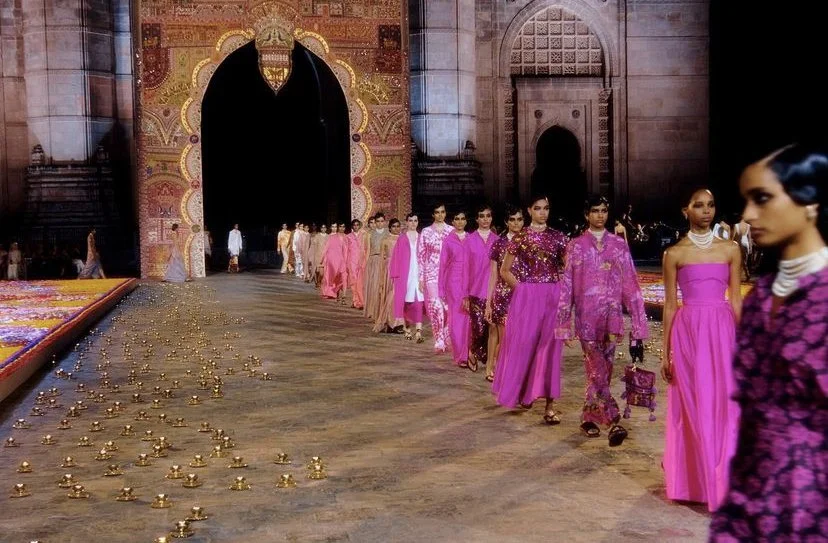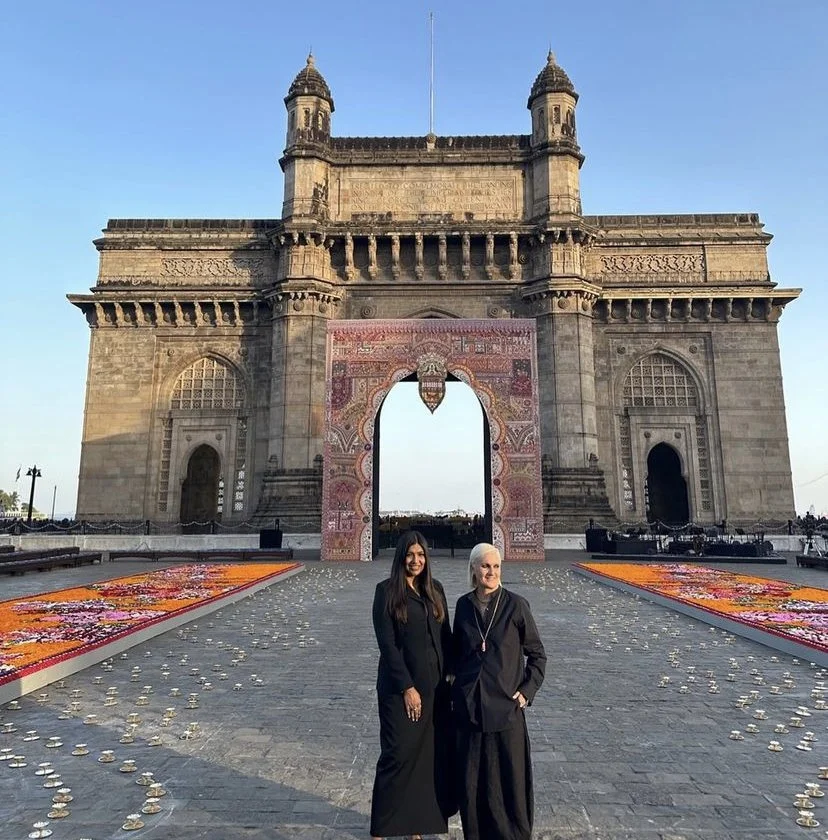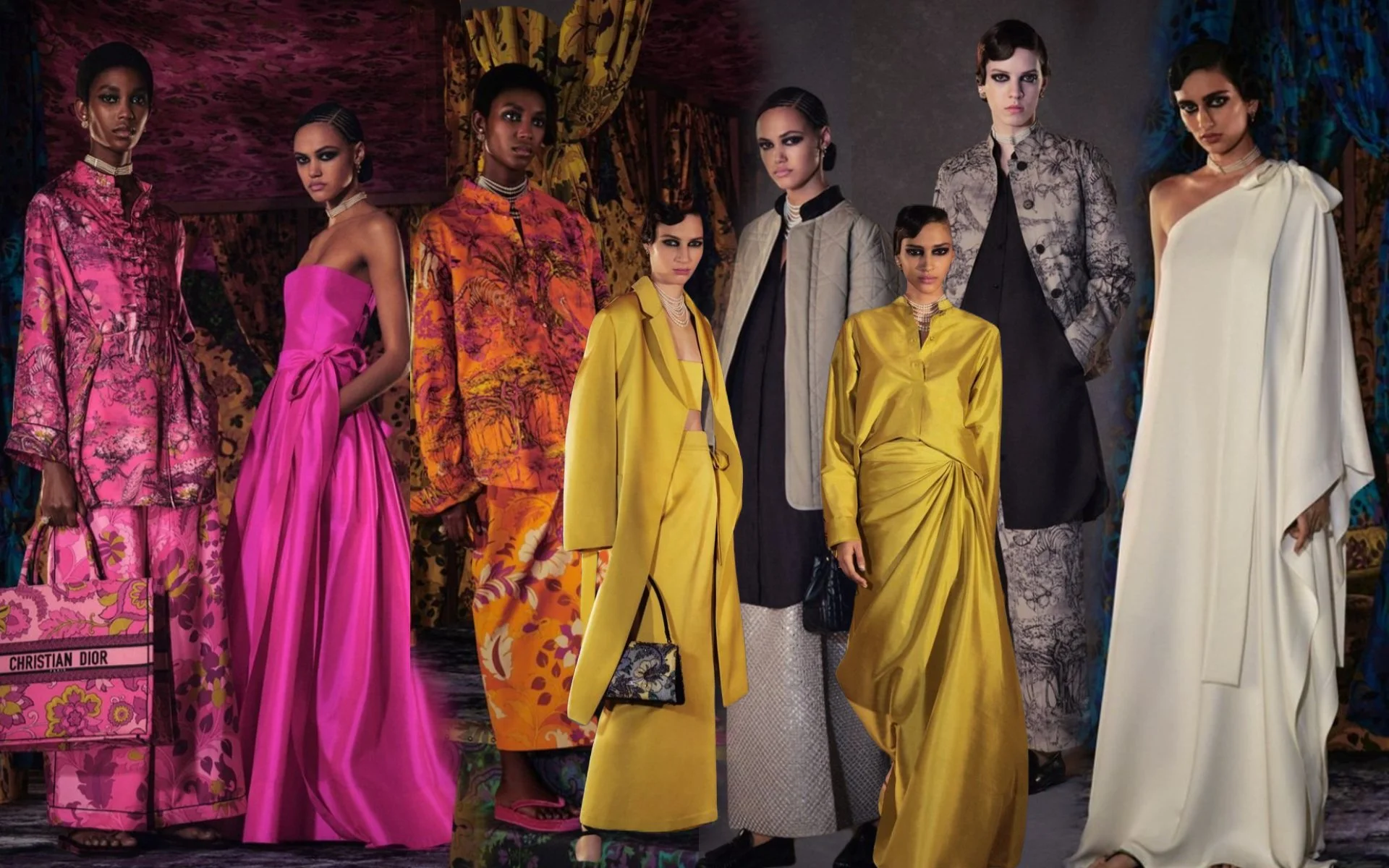Seriously, who knew of the wave of brilliant, conscious talent hailing from Australia. Australia’s fashion week is synonymously known for its Resort collections due to the country’s laid back beachy, vacation vibe and aesthetic. After delving into the shows and presentations, I was pleasantly surprised by how many designers are committed to taking proactive measures surrounding sustainability efforts and ethical practices. Many brands and designers use their websites to highlight their missions, and have pledged to reduce the impact of the fashion industry on our planet.
Maggie Marilyn
Maggie Marilyn is a brand that made a commitment to sustainability, circularity, and innovation long ago. They are the torch carriers of brands who are eco-conscious and sustainably-focused. Many of the materials used in this collection were upcycled and reimagined.
Personally, I enjoyed the crispness of the tailored shirting, paired with relaxed pieces such as bikini separates, oversized jeans, or bloomers. The whimsical ballets and floral features added balance, and thus supporting the nautical aesthetic.
Bec + Bridge
Bec Cooper and Bridget Yorston are the brilliant duo behind, Australian womenswear brand, Bec+Bridge. Although I hadn’t heard of this brand prior to delving into AAFW 24, I was incredibly impressed not just by their effortless designs, but mostly the brand’s commitment to offsetting their impact on the Globe by consciously creating a circular economy that eliminates textile waste from landfills.
Bec+Bridge ethos and ethical values are forward facing. On their website, they highlight their commitments to sustainability in a number of ways including using plant-based materials for online mailer bags, recyclable card stock and 100% biodegradable garment bags. Also by choosing to use ethical manufacturing, the brand co-create with Australian makers initially, and global suppliers who ensure ethical principles.
In creating this incredible collection of flowy, elevated “90s It Girl” separates, the designers partnered with textile recycling company, Upparel, to produce with repurposed stock fabric. The relaxed, neutral toned suiting paired with mesh crop tops lands right on the line of edgy and sensuality.
Yousef Akbar
Yousef Akbar is a Saudi born designer who grew up as an artist at heart but couldn’t fully lean into those aspirations being raised in a conservative family. He moved to Australia on scholarship earning both a bachelor’s and master’s degrees in logistics and supply chain management. Later he wanted to learn to create his own clothes, so he enrolled in fashion school, and started his own brand in 2017.
Yousef Akbar is an award-winning women’s eveningwear brand that was a standout during AAFW. His brand’s mission is to also find ways to minimize its carbon footprint and eventually reach zero-waste approach to fashion. He is quoted to be “striving to create high quality garments in the most sustainable and ethical ways available…”.
What I appreciated most in his AAFW 23 collection was the creativity, elevated craftsmenship and bold designs. This collection pays homage to the soul and strength of women in his life, and that inspiration extends beyond the clothing but to model’s hair, makeup and accessories. The recurrence of the 18k gold plated orchid accessories are a symbol of femininity, fertility and sexuality birthed from collaboration with Singapore’s Boheme. The model’s hair are inspired recreations of images of doves. The symbolism of the doves represent freedom and strength. The diamante crystals on the models faces represent the illuminating brilliance of extraordinary women and their radiant aura. The painted faces are inspired by the French song “Femme a la peau blue”.
Ngali
Denni Francisco’s Ngali is the first First Nations brand to show solo at AAFW. However, with the beauty of collaboration at play, there was country-wide incorporations of five other Aboriginal and Torres Strait Islander makers who provided an accompaniment of footwear, millinery, accessories and even runway artwork and music. Francisco is a Wiradjuri woman that wanted to ensure her culture was well represented in the brand’s 2024 Resort collection, titled Murriyang (translating into ‘skyworld’ in her Wiradjuri languge).
Models graced the runway in beautifully draped and layered flowy silks, shift dress with motifs of Australian landscapes and donned bold structural accessories.
Sources:
https://www.russh.com/ngali-resort-24-show-aafw/
https://www.yousefakbar.com/about
https://www.maggiemarilyn.com/about-us
https://www.becandbridge.com/pages/sustainability-ethics
https://www.theguardian.com/fashion/gallery/2023/may/18/australian-fashion-week-2023-in-pictures-ngalis-denni-francisco-becomes-first-indigenous-designer-to-hold-solo-show









